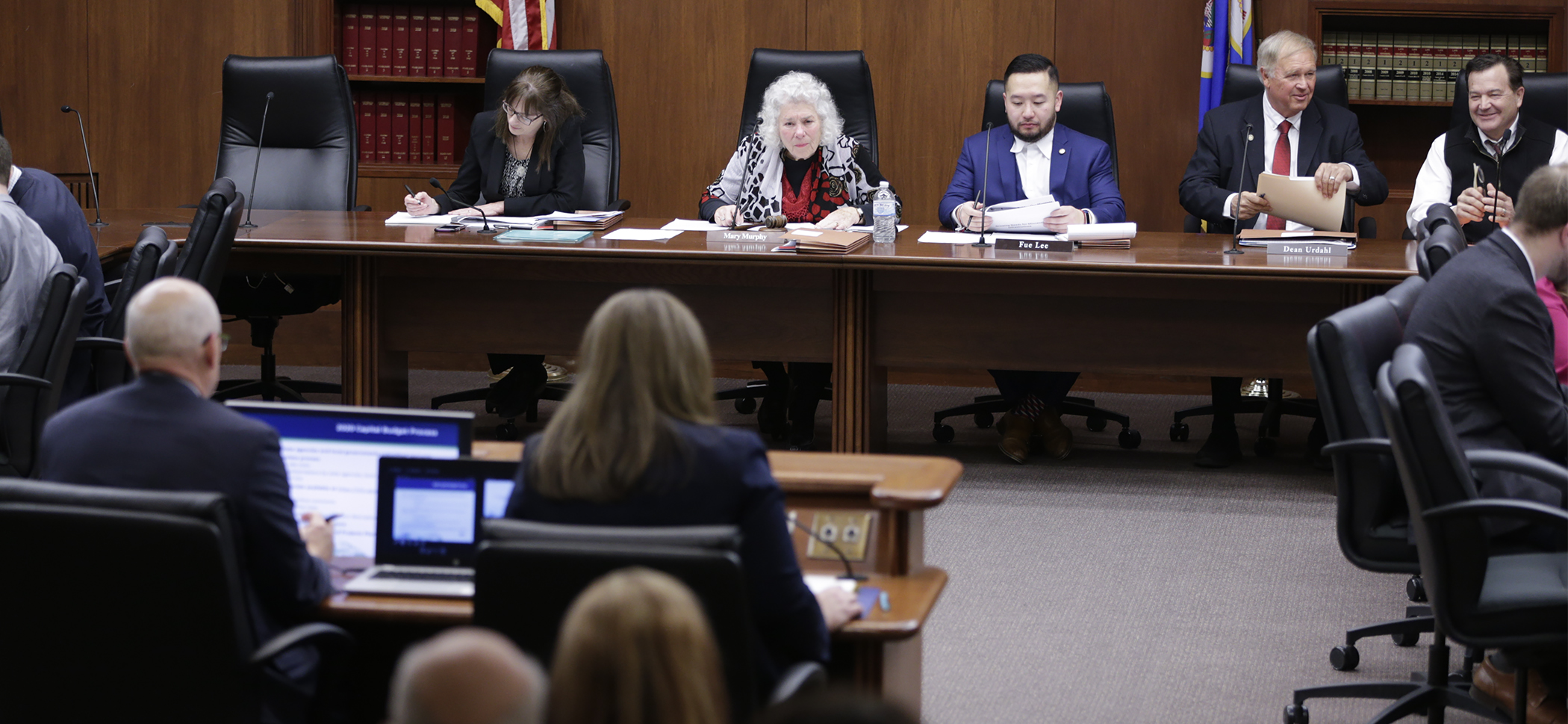House bonding division hears governor’s capital investment proposal

Gov. Tim Walz says there have been a record number of requests over the last few months to fund capital improvement projects around Minnesota, and the House Capital Investment Division wasted little time getting to work on Tuesday, holding its first meeting of the year hours before the House officially began its 2020 session.
At an informational hearing, Minnesota Management and Budget Commissioner Myron Frans detailed the governor’s bonding proposal.
It calls for a total financing package of more than $2.59 billion, with $2.03 billion in general-obligation bonds and an additional $571 million in financing, which includes:
- $252 million in appropriation bonds;
- $172 million in trunk highway bonds;
- $90 million user-financed bonds;
- $30 million in equity focused cash investments; and
- $26 million in state agency project cash.
The governor has titled his proposal the “Local Jobs and Projects Plan,” which would fund projects across a variety of areas, including:
- $673 million for public safety and asset preservation;
- $536 million for quality of life;
- $447 million for higher education;
- $293 million for water quality and infrastructure; and
- $276 million for safe and affordable housing.
During a mid-January press conference to introduce the plan, Walz said there have been a “record number of requests for state assistance from communities across Minnesota.”
Frans said there have been more than $5 billion in requests for bonding dollars, a more than 50 percent increase from the requests made two years ago. They include $3.7 billion from state agencies for 137 projects at state facilities and local grant projects. There are also $1.3 billion in direct requests from local governments to fund 219 other projects.
“We are not suggesting a $5 billion bonding bill, but the level of requests are indicative of the need,” Frans said, adding that funding has not kept up with demand over the years and the state’s backlog of needs is “system-wide and must be addressed.”
Frans said there is $4.7 billion needed for backlogged facilities maintenance projects in state-owned and higher education facilities and another $4 billion needed for nearly 1,000 projects to repair aging local water infrastructure. He said the state will also need to add 300,000 additional affordable housing units over the next decade.
Rep. Mary Murphy (DFL-Hermantown), the division chair, said members have been busy traveling the state during the interim to see those needs for themselves. The division spent 17 days on bonding tours and logged more than 3,000 miles on the road while hearing presentations around Minnesota.
“2019 was a very busy year for the capital investment committee,” Murphy said. “…We know these projects and we’re ready to formulate a bill.”
Murphy did not hint at the final size of that bill, although she has previously called for a $3.5 billion investment. She said the division will hold several more meetings over the coming weeks to learn about the bonding requests in greater detail and discuss what members would like in the bill.
Although she did not provide a specific timetable, after the meeting officially ended Murphy told members she would like to have a bill ready to go before the House begins its Passover/Easter Break, which starts April 4.
Related Articles
Search Session Daily
Advanced Search OptionsPriority Dailies
Ways and Means Committee OKs proposed $512 million supplemental budget on party-line vote
By Mike Cook Meeting more needs or fiscal irresponsibility is one way to sum up the differences among the two parties on a supplemental spending package a year after a $72 billion state budg...
Meeting more needs or fiscal irresponsibility is one way to sum up the differences among the two parties on a supplemental spending package a year after a $72 billion state budg...
Minnesota’s projected budget surplus balloons to $3.7 billion, but fiscal pressure still looms
By Rob Hubbard Just as Minnesota has experienced a warmer winter than usual, so has the state’s budget outlook warmed over the past few months.
On Thursday, Minnesota Management and Budget...
Just as Minnesota has experienced a warmer winter than usual, so has the state’s budget outlook warmed over the past few months.
On Thursday, Minnesota Management and Budget...